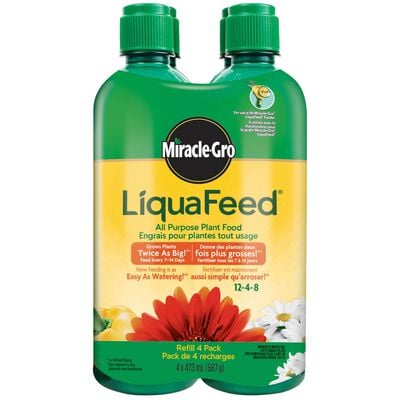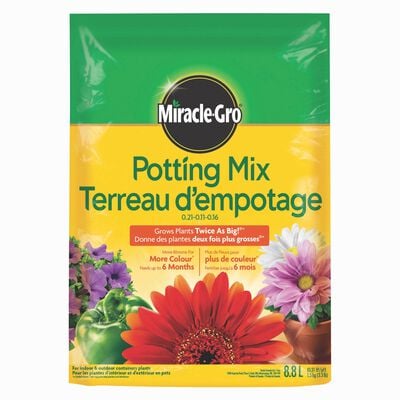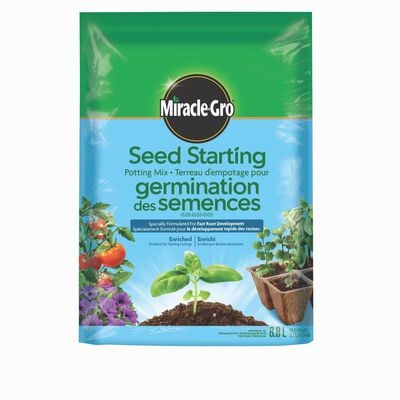
Grow Cilantro
Here is what you need to grow cilantro
- Plant cilantro in an area with full sun, but provide shade from intense heat if you live the South.
- Check soil often and water when the top inch becomes dry.
- Add a 3-inch layer of mulch to help preserve soil moisture and prevent weeds.
- Begin feeding cilantro with Miracle-Gro® Liquid All Purpose Plant Food one month after planting.
- Harvest once leaves are big enough to eat. Avoid harvesting more than 1/3 of the plant at one time.
Cilantro brings distinctive flair to many dishes, especially Mexican and Asian cuisine. It delivers the biggest flavor when fresh, so it makes sense to grow cilantro at home if you love this herb. It tends to grow fast, so it's important to know how to plant and harvest cilantro properly. Let us teach you how to grow cilantro.
Prep
When choosing where to plant cilantro, pick a spot that receives full sun (except in hottest regions, where light shade is ideal). In planting beds, give this herb room to self-sow baby plants once it begins to produce seeds, giving you a continuous supply of fresh cilantro.
Be sure to provide well-drained soil rich with organic matter. In planting beds, enrich existing soil and improve drainage by mixing 3 inches of aged compost-enriched Miracle-Gro® All Purpose Garden Soil into the top 6 inches of soil. Fill containers with Miracle-Gro® Potting Mix, which also contains compost but is lighter and fluffier than in-ground soil. If you're planting cilantro in raised beds, fill beds with either Miracle-Gro® Organics Garden Mix for Vegetables and Herbs or equal parts in-ground soil and container mix.
Plant
If you just can't wait to harvest, plant strong, vigorous young cilantro plants. You'll be able to snip cilantro to use in the kitchen right away! If you'd prefer to start from seed, plant seed directly into the soil outdoors in planting beds or pots. (Gardeners in coldest regions, though, may want to get a jump on the growing season by starting seeds indoors in Miracle-Gro® Seed Starting Potting Mix about 2 weeks before the average last spring frost.) Cilantro seeds are tiny and can be hard to handle, so you may prefer to start with young plants instead. Water well after planting cilantro.
Grow
If you planted seeds, once they begin to sprout, use scissors to thin cilantro seedlings so they're spaced 12 to 18 inches apart. Once plants reach several inches tall, pinch off the growing tips to encourage branching and bushiness.
Cilantro craves moist soil, so check the soil every couple of days and be sure plants in beds get about an inch of water per week. When growing cilantro in containers, you may need to water more frequently, especially as temperatures begin to rise.
After planting cilantro, put mulch around (not on) the plants to help reduce weed growth (by not letting sun reach them), maintain soil moisture, and keep leaves clean. Aim for a 2- to 3-inch layer of Scotts® bagged mulch, straw, shredded leaves, pine straw, or some other locally available material.
Two keys to an amazing harvest are fantastic soil and just the right kind and amount of nutrition. A month after planting, begin feeding cilantro with Miracle-Gro® Liquid All Purpose Plant Food, which feeds both soil and plants, to keep those tasty leaves coming. Follow label instructions to know how much and how often to apply.
If you'd prefer to grow cilantro indoors, consider a hydroponic growing system like an AeroGarden. Instead of growing in soil, plants grow directly in water that circulates around the roots, delivering moisture, nutrition, and air. You don't have to worry about your cilantro plants getting enough sunlight, either, thanks to the unit's grow light. This is an easy way to provide ideal growing conditions for cilantro—and a great way to keep your plants nearby for easy harvesting.
Harvest
Start picking individual leaves as soon as they're big enough to eat. Harvest entire stems by cutting them off at soil level, but don't take more than one-third of the entire plant at one time. Summer heat and long days will trigger flowering, which ends the leafy harvest.
Ripe cilantro seed is known as coriander. To collect seeds, slip stems with seeds attached into a paper bag. As seeds ripen, the husks around them will split, dropping seeds into the bag.
Use
Cilantro leaves are too delicate for cooking. For the most intense flavor, add this herb to dishes just before serving. Use the stems for infusing cilantro flavor into cooked dishes.



